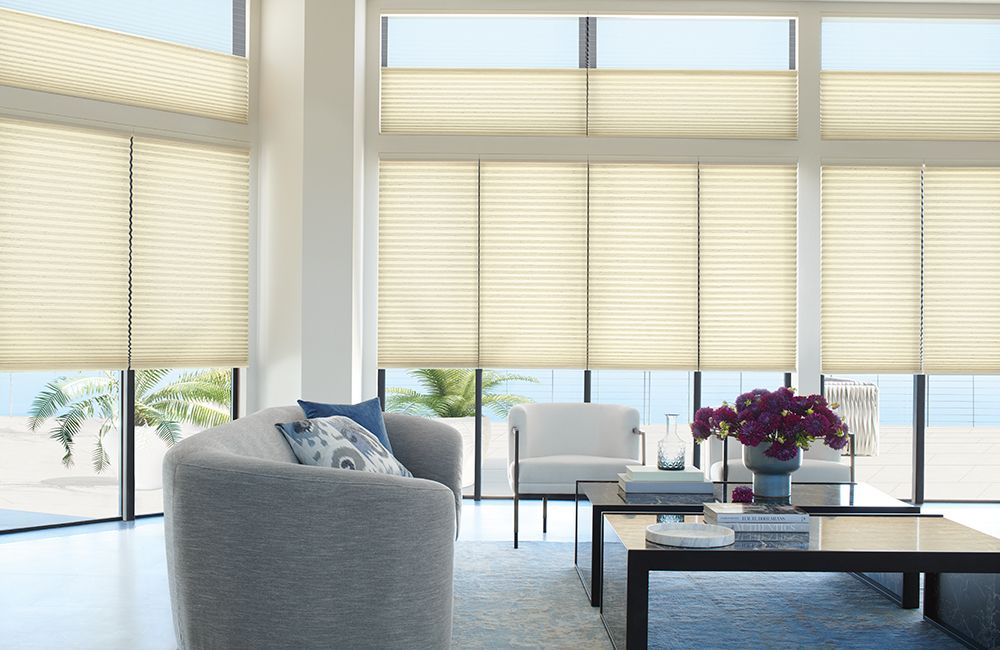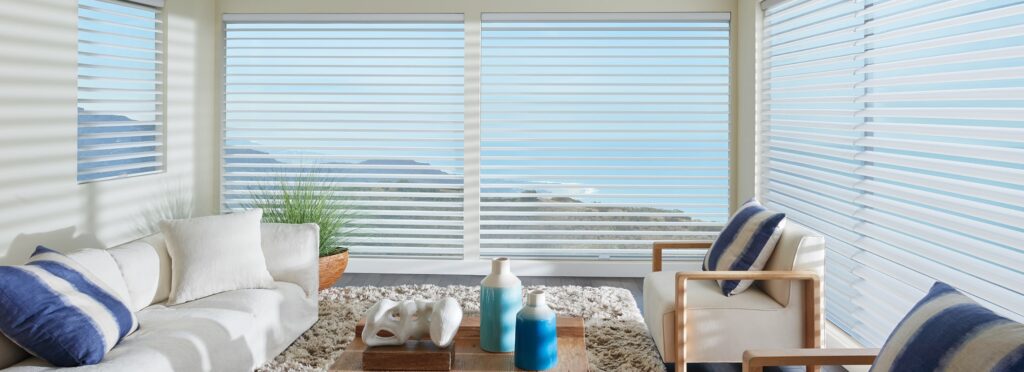Understanding Window Coverings
Considering new window treatments but not sure where to start? The CFS Interior Design team is a great resource to help guide you through the possibilities.
Here are a few general definitions to start with:
- Blinds and shades: These are not the same type of window treatment. While many people use these terms interchangeably, they are not substitutes for each other.
- Blinds refer to any type of treatment that has slats and is able to be lifted up and down or side to side. Examples of these would be horizontal blinds made of wood, metal, or faux wood as well as vertical blinds. These are not meant to go up and down on a daily basis because they are too heavy on the mechanical systems. They should only be lifted for cleaning purposes. However, if they are lifted daily be aware that you will be repairing them frequently. They are economically priced.
- Shades refer to coverings that are all one continuous piece that move up/down or side to side.
Roller/solar shades are usually around the same price point as slatted blinds but are lighter in weight, which make them a nice alternative to slatted blinds and at a great price point. Other examples include roman, cellular (also known as honeycomb), pleated, and roller shades (also known as solar or screen shades). In addition, many manufacturers have vertical roman and cellular shades to cover large areas such as patio doors or long lengths of windows.
- Interior shutters are actually an entirely unique category. This product can come in wood, faux wood, and PVC materials to suit any climate. They would not be designated as blinds because they are permanently fixed to the window trim. They also are meticulously measured and custom built which lends them to be more of a distant cousin of carpentry than a “true” blind.
Shutters can be used on a variety of windows/doors and are truly customizable. While they are gorgeous and adaptable, the cost is a considerable investment.
- Lastly, there is one category that contains combinations of both blinds and shades. One large manufacturer such as Hunter Douglas has been a leader in developing styles that transcend basic window covering definitions.
-
Silhouette and Luminette shades are examples of these. For example, Silhouette shades have fabric slats with attached sheers that offer a softer, more elegant version of a blind and shade all in one covering. Luminettes closely mimic Silhouettes soft appearance and shape except they operate from side to side like a vertical blind- a great solution for patio doors.
Lafayette Interior Fashions, another US-based manufacturer, has created Allure shades. These have flat bandings on a continuous loop of fabric that give the appearance of slatted shades without having slats to tilt. They operate on a roller, sliding vertically to diffuse the light through the fabric banding.
Hybrid shades such as Silhouettes, Allures, can vary widely in cost depending on application. They are another great alternative to slatted blinds because they are lightweight which means they can be raised daily (without added mechanical stress). Plus, they also offer another option of gently filtering light through vanes/bands instead of a harsher separation of light and shadows supplied through slatted blinds/shutters.
-
The cost of window coverings can vary greatly, and will depend on the material, hardware, and size involved. That’s why the CFS interior design team is a great resource to help guide you through making the best selections. Reach out to us with inquiries at 651-681-8100, [email protected], or www.cfs-floors.com








